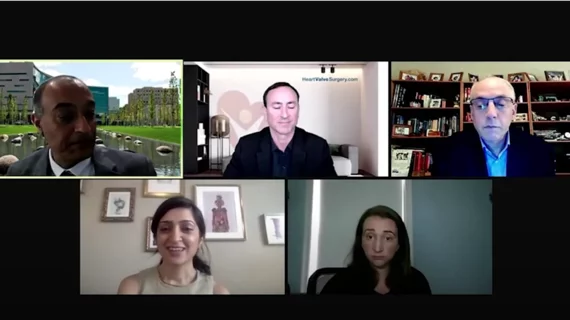Expert panel explores the importance of shared decision-making when treating heart valve disease
Shared decision-making is absolutely crucial when diagnosing and treating heart valve disease (HVD). Should a transcatheter intervention be considered or is surgery the best choice? Would the patient respond better to an artificial or a bioprosthetic heart valve? These are just a couple of the key questions that are vital for the entire heart team—and the patient—to be involved in that discussion.
A new webinar from the American College of Cardiology (ACC) and Medtronic examines how cardiologists and other specialists can encourage shared decision-making when patients present with signs of HVD.
Moderated by Milind Desai, MD, a cardiovascular medicine specialist at Cleveland Clinic, the webinar combines the perspectives of healthcare providers, administrators and patients to paint a complete picture of how shared decision-making can lead to improved outcomes and better, more efficient care.
Panelists include:
- Purvi Parwani, MD, director of the Women's Cardiovascular Health Clinic at Loma Linda International Heart Institute.
- Howard C. Herrmann, MD, a professor of cardiovascular diseases at the Perelman School of Medicine at the University of Pennsylvania.
- Kristin Pasquarello, administrative director of the Heart Valve Center at St. Francis Hospital.
- Adam Pick, patient advocate and founder of Heart-Valve-Surgery.com.
The panel also dives into recent shared decision-making guidelines published by the ACC and American Heart Association. The document calls for cardiologists to embrace open communication when patients present with signs of HVD, detailing how each member of the heart team can help make patients feel like active participants in their own care.
“In light of new guidelines, it is more important than ever to understand how to actually achieve shared decision-making goals in clinical practice,” Parwani says.
In addition, panelists explores results from the ACC CardioSurve survey, which included input from more than 150 practicing cardiologists. For example, 53% of respondents think patients with severe aortic stenosis aren’t as informed as they should be when the time comes to make key treatment decisions. Some 57% of cardiologists see patient preparation as one way to help address this issue.
“We know patients with AS count on discussions with their cardiologists, making it even more important to fine-tune how they prepare for these critical decisions,” Pick says. “As an advocate for heart valve disease education, I hope these insights empower patients to find their voice and know that their physicians value the dialogue around their treatment goals and preferences.”
Watch the full webinar here:
A Practical Approach to Shared Decision-Making when Treating Heart Valve Disease - YouTube

